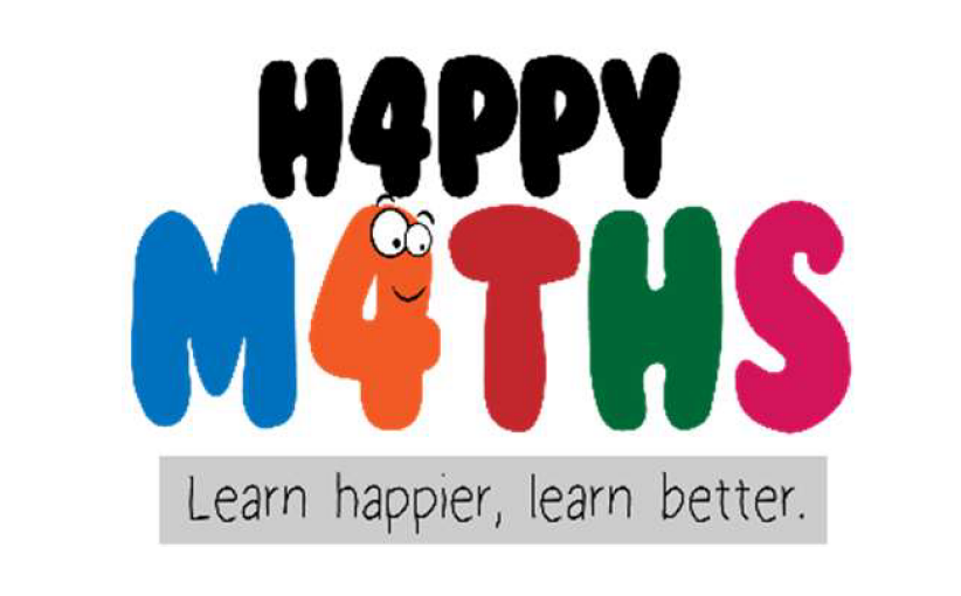The status of Maths Anxiety in Ireland (2024)
The Happy Maths project brings insights into the state of Maths Anxiety (MA) in Ireland in 2024. What are the levels of MA in the country? What are the impacts of this type of anxiety? Who in Ireland has higher or lower MA? You can find the answers to these and other questions below!
SUMMARY
- Levels of MA in Ireland are slightly lower than other countries where comparable data are available.
- Higher MA is associated with lower maths scores.
- Female students displayed significantly higher MA than boys.
- There is a link between parental MA and children's MA.
- Mothers had significantly higher MA than fathers.
- Students in DEIS schools displayed higher MA than students in non-DEIS schools. Children in DEIS schools have lower maths scores and parents with higher MA and a lower level of instruction compared to children in non-DEIS schools.
- The trait anxiety of a child is the biggest predictor of MA.
What is the level of MA in Irish primary schools?
The report is based on data from 1714 primary school students (745 girls and 969 boys) aged between 8 and 11 years old, besides a sample of their 1338 parents (800 mothers, 508 fathers, 30 guardians).
We collected not only the children's level of MA, but also their maths scores in a standardised national test, their level of general trait anxiety, and other demographic information. The MA levels were identified using the mAMAS self-assessment test developed by Cambridge University (Carey et al 2016). The test scores range from 9 (low maths anxiety) to 45 (high maths anxiety). The average level of Maths Anxiety for Irish pupils was 19.58 points.
The report is based on data from 1714 primary school students (745 girls and 969 boys) aged between 8 and 11 years old, besides a sample of their 1338 parents (800 mothers, 508 fathers, 30 guardians).
We collected not only the children's level of MA, but also their maths scores in a standardised national test, their level of general trait anxiety, and other demographic information. The MA levels were identified using the mAMAS self-assessment test developed by Cambridge University (Carey et al 2016). The test scores range from 9 (low maths anxiety) to 45 (high maths anxiety). The average level of Maths Anxiety for Irish pupils was 19.58 points.
How does MA in Irish primary schools compare to other countries?
Figure 1 shows the comparison between Ireland and other countries where the same MA scale was used. The average MA for these countries was 20.44 points. Irish pupils displayed a slightly but statistically significant lower MA. Ireland had similar scores compared to UK students, but significantly lower than countries such as USA and Italy.
Figure 1 shows the comparison between Ireland and other countries where the same MA scale was used. The average MA for these countries was 20.44 points. Irish pupils displayed a slightly but statistically significant lower MA. Ireland had similar scores compared to UK students, but significantly lower than countries such as USA and Italy.

Is MA associated with low maths scores in Ireland?
Our data confirmed a negative strong association between MA and students' standardised scores in the Irish maths national test. Figure 2 shows that the higher the MA of a student, the lower its maths scores are. The Pearson correlation between MA and math scores was ρ = -0.32, denoting a moderate correlation. Students with a STEN score greater than 7/10 had a MA of 15.1 versus a MA of 23.2 for students with a STEN score smaller than 4/10.
Our data confirmed a negative strong association between MA and students' standardised scores in the Irish maths national test. Figure 2 shows that the higher the MA of a student, the lower its maths scores are. The Pearson correlation between MA and math scores was ρ = -0.32, denoting a moderate correlation. Students with a STEN score greater than 7/10 had a MA of 15.1 versus a MA of 23.2 for students with a STEN score smaller than 4/10.

Is MA associated with general trait anxiety in Ireland?
Students with higher levels of general trait anxiety tend to have higher levels of MA. The correlation between these two emotional outcomes is high (Pearson’s correlation ρ=0.67).
Students with higher levels of general trait anxiety tend to have higher levels of MA. The correlation between these two emotional outcomes is high (Pearson’s correlation ρ=0.67).
Is there an association between MA levels and primary school students' gender in Ireland?
Female students scored an average MA of 20.83, significantly higher when compared to the 18.14 points scored by male students (Figure 3).
Female students scored an average MA of 20.83, significantly higher when compared to the 18.14 points scored by male students (Figure 3).

Are there differences in MA levels between DEIS and non-DEIS schools in Ireland?
Students in DEIS schools had a mean MA score of 20.17 points versus 18.8 points of non-DEIS students (Figure 4). Even if the gap is smaller than the one between genders, it is still significant.
Students in DEIS schools had a mean MA score of 20.17 points versus 18.8 points of non-DEIS students (Figure 4). Even if the gap is smaller than the one between genders, it is still significant.

What are the MA levels for parents of primary school pupils in Ireland?
Previous research suggests that the levels of MA of parents can have an influence on the development of this condition in their children, especially when anxious parents regularly help their children with math homework (Maloney et al., 2015). Figure 5 shows that a gender gap was also present between parents: the average MA for fathers was 18.46 versus 21.15 for mothers. Maternal MA was significantly correlated to both child MA (Pearson’s correlation ρ=0.35) and child general trait anxiety (Pearson’s correlation ρ=0.31), showing evidence that mothers MA could be transferred to children directly or by increasing their own general trait anxiety.
Previous research suggests that the levels of MA of parents can have an influence on the development of this condition in their children, especially when anxious parents regularly help their children with math homework (Maloney et al., 2015). Figure 5 shows that a gender gap was also present between parents: the average MA for fathers was 18.46 versus 21.15 for mothers. Maternal MA was significantly correlated to both child MA (Pearson’s correlation ρ=0.35) and child general trait anxiety (Pearson’s correlation ρ=0.31), showing evidence that mothers MA could be transferred to children directly or by increasing their own general trait anxiety.

Is there an association between parents' MA and their level of instruction in Ireland?
Figure 6 shows the distribution of MA scores by parents’ level of education. The higher is the level of education of each parent, the lower is the level of MA. The finding confirms that higher levels of MA are associated with lower academic achievements.
Figure 6 shows the distribution of MA scores by parents’ level of education. The higher is the level of education of each parent, the lower is the level of MA. The finding confirms that higher levels of MA are associated with lower academic achievements.

Is MA different according to parents' field of study in Ireland?
If we take into consideration the field of study, parents studying humanities had an average maths anxiety of 22.91, versus 19.69 for Business and 18.14 for STEN subjects.
If we take into consideration the field of study, parents studying humanities had an average maths anxiety of 22.91, versus 19.69 for Business and 18.14 for STEN subjects.
Is there a difference in parents' MA depending on whether their children attend a DEIS or non-DEIS school in Ireland?
Parents of children attending DEIS schools displayed higher MA than parents of children attending non-DEIS schools (Figure 7). The gap can be one of the explanations for the higher MA of children attending DEIS schools.
Parents of children attending DEIS schools displayed higher MA than parents of children attending non-DEIS schools (Figure 7). The gap can be one of the explanations for the higher MA of children attending DEIS schools.

Explaining the gender and DEIS school gap
The gender differences in MA are not to be attributed to genderspecific factors, but rather to the fact that girls were significantly more anxious in general than boys (the general anxiety of girls was 20% higher than boys), and that girls seem to inherit mothers’ maths anxiety more than boys. Regarding DEIS vs non-DEIS schools, the gap is not explained by different levels of general anxiety. Pupils in DEIS schools were as anxious as non-DEIS pupils, but they were indeed more maths anxious. The gap is explained mainly by the poorer maths performance of DEIS students.
The gender differences in MA are not to be attributed to genderspecific factors, but rather to the fact that girls were significantly more anxious in general than boys (the general anxiety of girls was 20% higher than boys), and that girls seem to inherit mothers’ maths anxiety more than boys. Regarding DEIS vs non-DEIS schools, the gap is not explained by different levels of general anxiety. Pupils in DEIS schools were as anxious as non-DEIS pupils, but they were indeed more maths anxious. The gap is explained mainly by the poorer maths performance of DEIS students.
What is the strongest predictor of MA?
Table 1 shows the factors included in our study ranked by their association with MA. The general trait anxiety of a child has by far the strongest association with child’s MA, followed by maths performance and the MA of the mother. Other factors had a negligible effect when the top three factors are accounted for.
Table 1 shows the factors included in our study ranked by their association with MA. The general trait anxiety of a child has by far the strongest association with child’s MA, followed by maths performance and the MA of the mother. Other factors had a negligible effect when the top three factors are accounted for.

Conclusions
The report has highlighted the status of MA in Ireland and the relations of MA with other cognitive and emotional factors. Irish primary school pupils displayed a strong gender gap, and a substantial difference between students in DEIS schools versus students in non-DEIS schools. The study showed how pupils in DEIS schools are children of parents with higher maths anxiety and lower levels of education. Parents MA was strongly associated with their level of education, as evidence that MA could have limited their career choices. MA was found to be strongly correlated with poor academic performance. Our study analysis shows that it is a combination of emotional and cognitive factors that fuels MA: maths anxious students are often anxious students in general, and therefore treating their anxiety could be crucial in lowering their MA as well. The MA of mothers was significantly associated with both general anxiety and maths anxiety of the child. The analysis depicts a vicious circle, where pupils in disadvantaged schools develop higher maths anxiety, potentially inherited from their parents, and consequently they will have less chance to be academically proficient and to have jobs of higher socioeconomic status. Recommendations for dealing with MA include addressing both the cognitive and emotional aspects of children. It is important to increase children’s maths performance with specific didactic interventions, in order to increase their self-esteem and their attitude towards maths. However, it is essential also to intervene in their emotional aspects, using new educational strategies involving more collaboration, less competition or the use of game-based learning.
The report has highlighted the status of MA in Ireland and the relations of MA with other cognitive and emotional factors. Irish primary school pupils displayed a strong gender gap, and a substantial difference between students in DEIS schools versus students in non-DEIS schools. The study showed how pupils in DEIS schools are children of parents with higher maths anxiety and lower levels of education. Parents MA was strongly associated with their level of education, as evidence that MA could have limited their career choices. MA was found to be strongly correlated with poor academic performance. Our study analysis shows that it is a combination of emotional and cognitive factors that fuels MA: maths anxious students are often anxious students in general, and therefore treating their anxiety could be crucial in lowering their MA as well. The MA of mothers was significantly associated with both general anxiety and maths anxiety of the child. The analysis depicts a vicious circle, where pupils in disadvantaged schools develop higher maths anxiety, potentially inherited from their parents, and consequently they will have less chance to be academically proficient and to have jobs of higher socioeconomic status. Recommendations for dealing with MA include addressing both the cognitive and emotional aspects of children. It is important to increase children’s maths performance with specific didactic interventions, in order to increase their self-esteem and their attitude towards maths. However, it is essential also to intervene in their emotional aspects, using new educational strategies involving more collaboration, less competition or the use of game-based learning.
References:
Ashcraft, M. H. (2002). Math anxiety: Personal, educational, and cognitive consequences. Current directions in psychological science, 11(5), 181-185.
Szczygieł, M., & Pieronkiewicz, B. (2022). Exploring the nature of math anxiety in young children: Intensity, prevalence, reasons. Mathematical Thinking and Learning, 24(3), 248-266.
Tapia, M., & Marsh, G. E. (2004). The relationship of math anxiety and gender. Academic Exchange Quarterly, 8(2), 130-134.
Ma, X. (1999). A meta-analysis of the relationship between anxiety toward mathematics and achievement in mathematics. Journal for research in mathematics education, 30(5), 520-540.
Hill, F., Mammarella, I. C., Devine, A., Caviola, S., Passolunghi, M. C., & Szűcs, D. (2016). Maths anxiety in primary and secondary school students: Gender differences, developmental changes and anxiety specificity. Learning and individual differences, 48, 45-53.
Levy, H.E., Fares, L. and Rubinsten, O., 2021. Math anxiety affects females’ vocational interests. Journal of Experimental Child Psychology, 210, p.105214.
Wang, Z., Hart, S.A., Kovas, Y., Lukowski, S., Soden, B., Thompson, L.A., Plomin, R., McLoughlin, G., Bartlett, C.W., Lyons, I.M. and Petrill, S.A., 2014. Who is afraid of math? Two sources of genetic variance for mathematical anxiety. Journal of Child Psychology and Psychiatry, 55(9), pp.1056-1064.
Szczygieł, M., & Pieronkiewicz, B. (2022). Exploring the nature of math anxiety in young children: Intensity, prevalence, reasons. Mathematical Thinking and Learning, 24(3), 248-266. Tapia, M., & Marsh, G. E. (2004). The relationship of math anxiety and gender. Academic Exchange Quarterly, 8(2), 130-134.
Zhang, J., Zhao, N. and Kong, Q.P., 2019. The relationship between math anxiety and math performance: A meta-analytic investigation. Frontiers in Psychology, 10, p.1613.
Carey, E., Hill, F., Devine, A., & Szűcs, D. (2017). The modified abbreviated math anxiety scale: A valid and reliable instrument for use with children. Frontiers in Psychology, 8, 11.
Sadiković, S., Milovanović, I., & Oljača, M. (2018). Another psychometric proof of the Abbreviated Math Anxiety Scale usefulness: IRT analysis. Primenjena psihologija, 11(3), 301-323.
Szczygieł, M. (2019). How to measure math anxiety in young children? Psychometric properties of the modified Abbreviated Math Anxiety Scale for Elementary Children (mAMAS-E). Polish Psychological Bulletin, 50(4).
Primi, C., Donati, M. A., Izzo, V. A., Guardabassi, V., O’Connor, P. A., Tomasetto, C., & Morsanyi, K. (2020). The Early Elementary School Abbreviated Math Anxiety Scale (the EES-AMAS): A new adapted version of the AMAS to measure math anxiety in young children. Frontiers in Psychology, 11, 1014.
Cohen, L. A., & Limbers, C. A. (2022). Factor Structure and Gender Invariance of the Abbreviated Math Anxiety Scale (AMAS) in Middle School Students. Trends in Psychology, 30(4), 788-807.
Ashcraft, M. H. (2002). Math anxiety: Personal, educational, and cognitive consequences. Current directions in psychological science, 11(5), 181-185.
Szczygieł, M., & Pieronkiewicz, B. (2022). Exploring the nature of math anxiety in young children: Intensity, prevalence, reasons. Mathematical Thinking and Learning, 24(3), 248-266.
Tapia, M., & Marsh, G. E. (2004). The relationship of math anxiety and gender. Academic Exchange Quarterly, 8(2), 130-134.
Ma, X. (1999). A meta-analysis of the relationship between anxiety toward mathematics and achievement in mathematics. Journal for research in mathematics education, 30(5), 520-540.
Hill, F., Mammarella, I. C., Devine, A., Caviola, S., Passolunghi, M. C., & Szűcs, D. (2016). Maths anxiety in primary and secondary school students: Gender differences, developmental changes and anxiety specificity. Learning and individual differences, 48, 45-53.
Levy, H.E., Fares, L. and Rubinsten, O., 2021. Math anxiety affects females’ vocational interests. Journal of Experimental Child Psychology, 210, p.105214.
Wang, Z., Hart, S.A., Kovas, Y., Lukowski, S., Soden, B., Thompson, L.A., Plomin, R., McLoughlin, G., Bartlett, C.W., Lyons, I.M. and Petrill, S.A., 2014. Who is afraid of math? Two sources of genetic variance for mathematical anxiety. Journal of Child Psychology and Psychiatry, 55(9), pp.1056-1064.
Szczygieł, M., & Pieronkiewicz, B. (2022). Exploring the nature of math anxiety in young children: Intensity, prevalence, reasons. Mathematical Thinking and Learning, 24(3), 248-266. Tapia, M., & Marsh, G. E. (2004). The relationship of math anxiety and gender. Academic Exchange Quarterly, 8(2), 130-134.
Zhang, J., Zhao, N. and Kong, Q.P., 2019. The relationship between math anxiety and math performance: A meta-analytic investigation. Frontiers in Psychology, 10, p.1613.
Carey, E., Hill, F., Devine, A., & Szűcs, D. (2017). The modified abbreviated math anxiety scale: A valid and reliable instrument for use with children. Frontiers in Psychology, 8, 11.
Sadiković, S., Milovanović, I., & Oljača, M. (2018). Another psychometric proof of the Abbreviated Math Anxiety Scale usefulness: IRT analysis. Primenjena psihologija, 11(3), 301-323.
Szczygieł, M. (2019). How to measure math anxiety in young children? Psychometric properties of the modified Abbreviated Math Anxiety Scale for Elementary Children (mAMAS-E). Polish Psychological Bulletin, 50(4).
Primi, C., Donati, M. A., Izzo, V. A., Guardabassi, V., O’Connor, P. A., Tomasetto, C., & Morsanyi, K. (2020). The Early Elementary School Abbreviated Math Anxiety Scale (the EES-AMAS): A new adapted version of the AMAS to measure math anxiety in young children. Frontiers in Psychology, 11, 1014.
Cohen, L. A., & Limbers, C. A. (2022). Factor Structure and Gender Invariance of the Abbreviated Math Anxiety Scale (AMAS) in Middle School Students. Trends in Psychology, 30(4), 788-807.
LAST UPDATE: December 2021
© All Right Reserved. Intelligent Games Labs
e-mail us: pierpaolo.dondio@tudublin.ie

